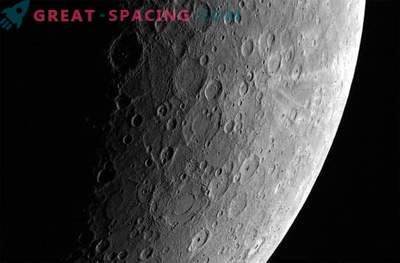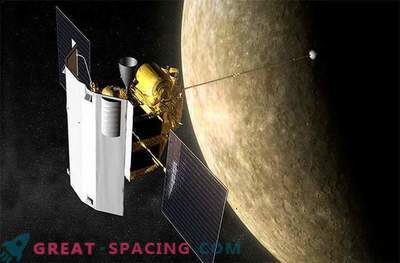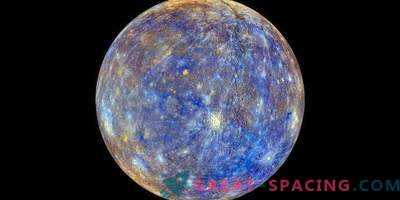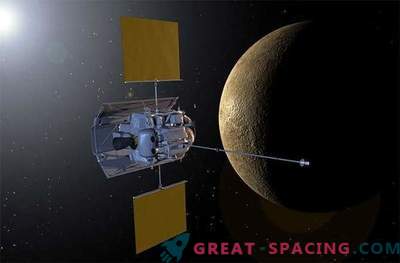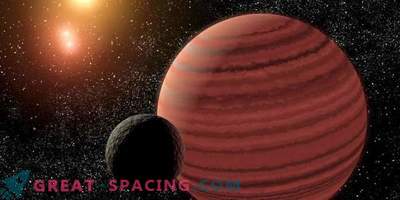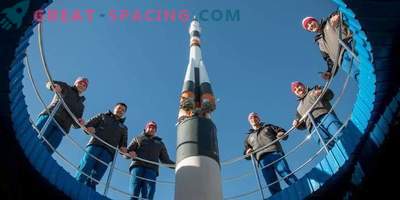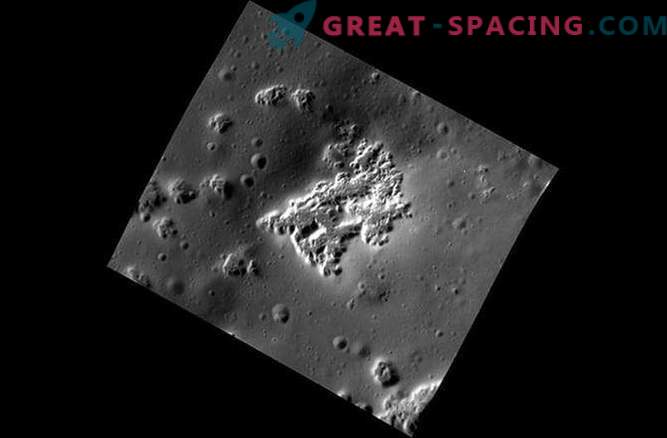
Mercury - the devastated planet, located closest to the Sun, resembles a dead world, however, the NASA probe showed that this is not quite so. As it turned out, geological processes may continue on the planet.
New images made by NASA Messenger space station, showed on the surface of the planet strange structures, depressions of irregular shape and with a flat bottom. The size of these formations does not exceed tens of meters in depth, and a kilometer in diameter, say the scientists. NASA researchers suggest that the cause of such formations may be the loss of calcium and sodium. It is possible that the process continues today.
"The messenger revealed a number of amazing facts during his mission around Mercury," said David Blyuit, a mission member and scientist from the Applied Physics Laboratory at John Hopkins. This scientist was a member of the Mercury research team as part of a low-altitude campaign conducted over the past six weeks on Messenger around the planet. These and other findings were presented during the 46th Lunar and Planetary Conference in Texas on March 16th.
According to Bluit, the potholes and hollows on the surface of Mercury are a surprise that scientists, who analyze geological processes on the planet, did not expect to see.
The first mission to Mercury, Mariner-10, which flew around the planet 3 times in the mid-1970s, made photographs of the surface of low quality. Even in the pictures of those times Blyuit noticed strange spots near the craters. Once again, such anomalies were observed in 2011, when the Messenger went into orbit. After the resumption of the mission to Mercury and the improvement of the photograph, the scientists were able to obtain high-quality images, where irregularly shaped indentations on the surface of Mercury were clearly visible. All the facts testify to the young age of the potholes formed on the surface of the Mercury. Firstly, they are not deep and there are no special grooves and other craters on their bottom. The edges of the depressions are sharp, which also means small age.
Blyuit is amazed that the mission has found such a young terrain education. According to the scientist, these depressions are not more than 10 million years old, and some of them continue to develop.
“It is surprising to find places of active geological activity on Mercury,” the scientist notes.
The moon, mars and some other satellites from the solar system sometimes “overgrow” with certain voids. The formation of such voids is due to the presence of water ice mixed with mud and rocks. When such ice begins to interact with solar radiation, it passes into another state of aggregation — it turns into gas and forms voids at its place in another state.
However, unlike satellites and Mars, there is no such amount of water ice on Mercury to form voids, captured by scientists.
In response, Blyuit declares: "It seems that in the rocks of Mercury there is something that cannot be kept in the formed medium. Like gas, this substance sublimates and is released from the general structure of the cover, forming voids on the planet."
Mercury is a planet whose temperature reaches 801 degrees Faryngate (427 centigrade). Its proximity to the Sun was the reason for the constant "bombing" of the surface by charged particles (ions) that emerged from the solar wind. The magnetic field of Mercury is not the most reliable defender, because the planet is in constant discomfort, bombarded by flooding of micrometeorites. Meteor showers on Mercury are much faster than those that once showered the moon. In total, these factors create debilitating conditions on the planet.
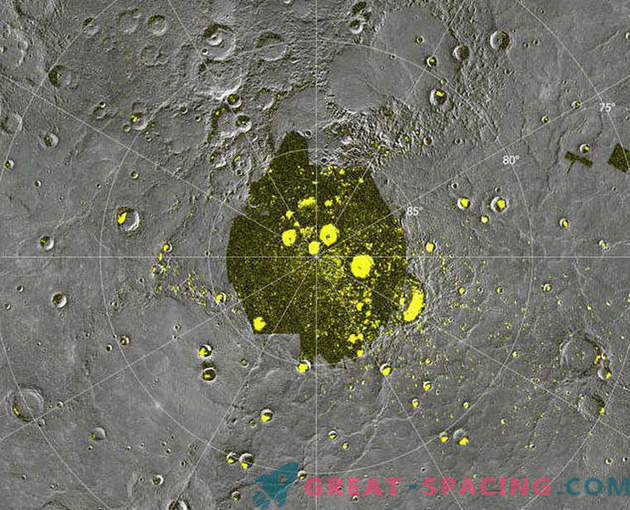
Signs of ice at the North Pole of Mercury
In addition to identifying strange point formations on Mercury, the Messenger discovered other suspicious anomalies. The modern space station was properly equipped so that it was possible not only to photograph the object, but also to determine its approximate composition. As it turned out, there are many volatile elements on Mercury (with a low boiling point). NASA employees did not expect such results, because it is surprising that there is so much potassium, chlorine and sulfur on a rocky planet.
"Based on research, it is likely that these formations are associated with sulfur, which was lost by Mercury and went into space," says Blyuit.
Since 2004, Messenger has become the first spacecraft to go into Mercury orbit. In 2011, he continued his mission and began to slowly maneuver closer to the planet. In January 2015, the distance to the surface was only 9, 3 miles (or 14, 9 km). The April tasks for Messenger are to come even closer to Mercury, so that a more detailed study of its surface becomes possible.
In addition to the shallow depressions in the relief, the scientists found ledges on Mercury even smaller.
Blyuit also explained this phenomenon: over time, the bark of Mercury cools down, as a result of which the rocks shrink and crack. The formation of cracks inevitably leads to irregularities between the blocks and some rocks push others upward, from which the resulting ledges are obtained by scientists. Interestingly, in just a couple of billion years, the planet has already shrunk a few kilometers.
The ledges on Mercury have a length of hundreds of kilometers, however, better-quality images obtained from the latest reports of Messenger showed that in addition to the broaching ledges, there are smaller ones. It is obvious that such uplifts are relatively young and it is quite possible that the history of their formation is not yet over. The mission to Mercury also captured the only water formations on the planet: frozen pools that can be found in dark corners on the surface. Studies have shown that these pools are as young as the shallow depressions on the surface.
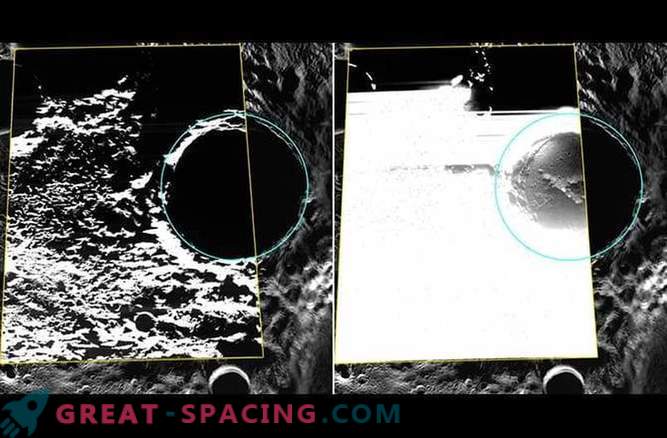
Kandinsky Crater is located near the north pole of Mercury, and may have water ice. The photo was taken by the Messenger spacecraft on October 15, 2014.
Sean Solomon, the principal investigator at Columbia University in New York, suggests that the water bodies on Mercury are traces of the fall of meteorites containing ice. There is a version that the water hit the Earth in a similar way.
“The process of exchanging chemical elements between participants in the solar system is a potential cause of life on the planet,” says Sean Solomon.
Finally, it became possible to study Mercury at the level of rock-forming elements. This will be possible thanks to the X-ray spectrometer of the spacecraft.
In April of this year, the mission will end. "The benefits of the Messenger flight are difficult to overestimate - it turned out that people were largely mistaken about the true state of affairs on Mercury and this planet, which is closest to the Sun, does not look like the Moon at all, as was supposed earlier," says Blyuit.
Changes in views on one planet can dramatically change not only the theory of the formation of a single cosmic body, but also the solar system as a whole.
Solomon concluded by saying that for another year the Messenger team would be engaged in the correlation of the received data, their archiving and analysis. As a result, some time after the completion of the work, a book will be released with a summary of the information received from the probe and a new look at the solar system. "It seems that I am lucky, since I managed to become a member of the mission of the Messenger from the very beginning of this idea and to obtain sound conclusions," says Blyuit. "I was one of the first to see what was previously attributed to the incognito section - I saw the harsh beauty of Mercury. I am grateful to the entire Messenger team for new ideas and endless enthusiasm. It will be sad to hear on the radio when they transmit about the last flight of the probe" - continues scientist.
Sean Solomon did not stand aside and also expressed his gratitude:
“The messenger lived with our hopes, more than once got into trouble: difficult thermal conditions, radiation, energy emissions from the Solar System, etc. Even if the ship has only a few days left to live, we know that the information obtained from the probe is invaluable to science. Undoubtedly, this is a breakthrough, the discovery of new horizons in the study of space. It will be sad to find out once that the connection with Messenger has been lost. ! "
